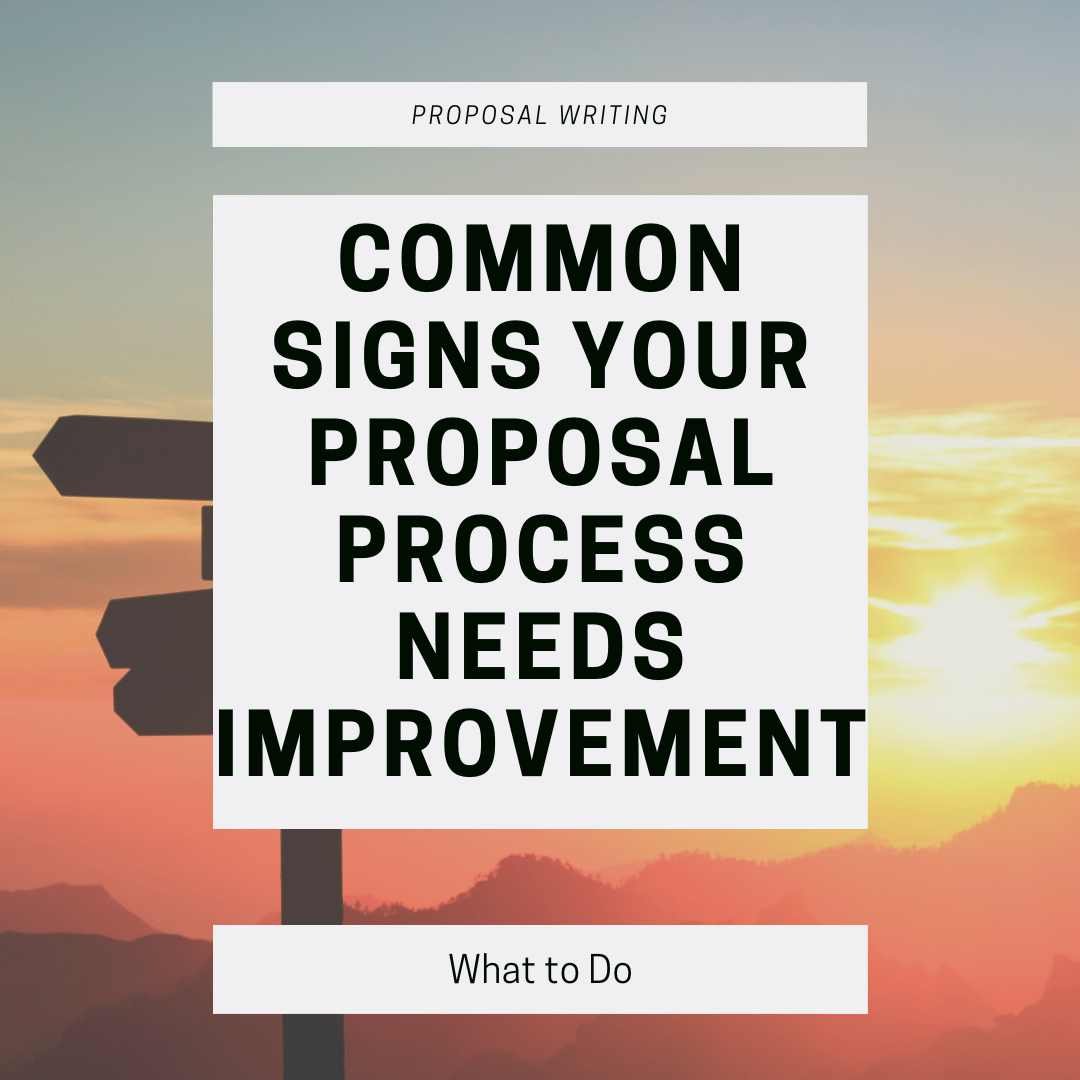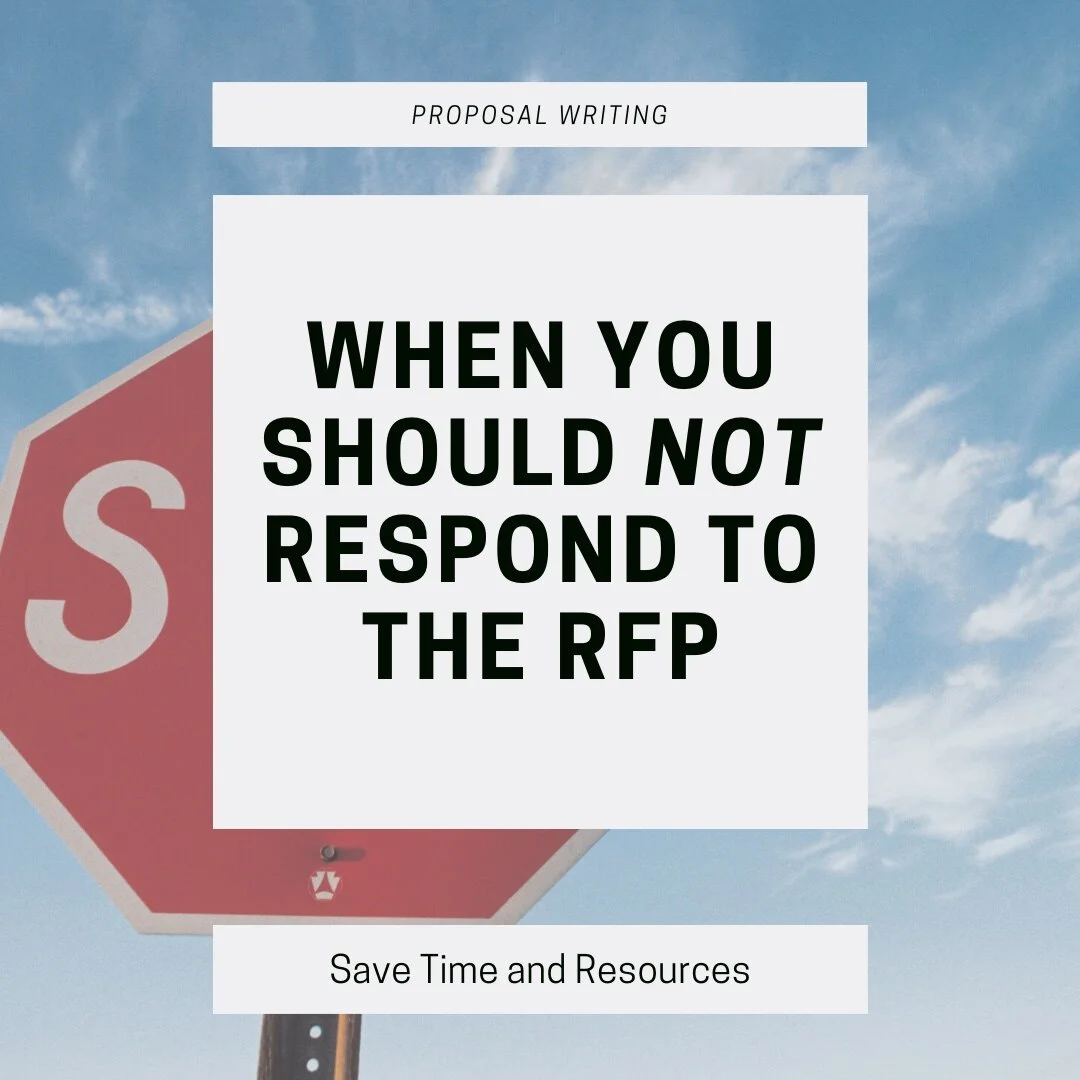While every company, project, and customer is different, the fundamentals of proposal development stay the same. There are a few key sections that will always be in your proposal, and there are less common sections to prepare for in advance. When it comes to writing the actual content, however, there are two main activities that will help make your proposal stand out.
Read MoreBeing invited to respond to an RFP is both a blessing and a curse. On the one hand, you have an opportunity to secure a potentially very lucrative contract. On the other, you now have to drop everything to create a compelling proposal within a limited timeframe. It’s easy to pass on opportunities with a thought of “I’ll go after the next one”, and before you know it, it’s been months since you sent out a response to an RFP.
Fortunately, there are a few ways to make it easier to respond to RFPs regularly.
Read MoreWhether you respond to RFPs or send out less formal proposals, when busy season arrives, there aren’t enough hours in a day to update your content. By prepping your content library for busy season in advance, you save many headaches down the road, and the improved proposal content will help you win more contracts.
Read MoreWhen you’re asked to create a proposal for a new project, you likely have no idea where to start. Whether it’s an internal project or a project for a potential client, there are a few key sections to include in your proposal.
Read More“I hate writing proposals” is one of the most common comments we hear. And, honestly, why wouldn’t you hate writing proposals? They have tight deadlines, high pressure, often a lot of competition, and for RFPs, a ton of questions you have to answer. Fortunately, there are some ways to make the process a little less painful.
Read MoreIf you search “how to write a business proposal”, you will find guides for all types of proposals. The hard part is narrowing down the content to find the type of proposal that fits your needs. In this post, we cover the 5 most common types of business proposals and how to create one that stands out.
Read MoreEveryone knows to include the main sections of your proposal: pricing, solution description, company overview, etc. However, including not-so-common content can help your proposal stand out and connect with the customer. One type of content that is often overlooked in proposals is client testimonials.
Read MoreWhether you’re new to the world of RFPs or a proposal writing expert, sometimes you need a little extra help to get that RFP response out the door. In today’s post, we’re covering a few different types of RFP support services available to help you win your next contract.
Read MoreA key step for winning larger contracts for any construction business is to enter the world of RFPs. If you’re new to the space, however, it may be overwhelming and confusing. In today’s post, we’ll dive into construction RFPs and how you can navigate the process.
Read MoreSending proposals to customers is often a high stakes activity. Most have hard deadlines, the potential for tough competition, and the pressure to win a new contract for the business. A clear and repeatable process makes it easier to create winning proposals. If you haven’t updated your proposal process for a while, it may be time to take another look.
Read MoreAs one of the final steps in the sales process, improving proposal win rates can have a direct impact on your business. While there are many steps you can take to improving your win rates, there is one that stands out from the rest.
Read MoreOut of all of our clients, about 90% cite a fear of having an unprofessional proposal as the reason for seeking help. If you’re in a similar situation, there are a few steps you can take today to make sure your proposals look professional.
Read MoreUnless you are a proposal writer, your main skillset isn’t likely in creating proposals. Because of this, it can sometimes be a good idea to bring in proposal help to make sure your potential clients receive your best possible proposal. In this post, we look at a few example scenarios of when you might need help and the types of support that would be a best fit.
Read MoreAfter spending hours crafting content, designing graphics, and formatting your proposal, you hear back from the customer that they went with someone else. While a loss is always tough, it doesn’t have to be a total loss. Instead, use this to improve your process for next time. Below are a few ways you can turn a proposal loss into a win for your proposal process.
Read MoreIf you’ve created a few proposals, you’re probably ready to have a template that you can reuse for each potential client without having to start from scratch each time. Creating a reusable proposal template will save you time and energy, but it is important to make sure that it still speaks to your audience’s specific needs.
Read More“What if our proposals don’t look professional?” is a fear of many small business owners who are competing against larger companies. The truth is, it doesn’t require advanced design knowledge to make your proposals professional enough to stand out from the competition. In this blog post, we cover a few beginner proposal design best practices that you can apply to your proposals today.
Read MoreFrom working with legal to finalizing pricing to designing your proposal to inserting forms -- proposal writing is a process that involves a lot of various skills. Whether you're a team of two or a team of fifteen, the following tools will help make your proposal writing process easier.
Read MoreIf you have never responded to an RFP before, your first question might be “How do I actually win an RFP?”. In today’s post, we’re going to look at the tried and true process that nearly every company follows to win their first RFP.
Read MoreMany times, when you are creating a proposal, there is most likely at least one other competitor who is submitting a proposal at the same time. The competitive nature of proposals, especially in response to RFPs, makes it essential that your content highlights why your company is the best choice for the project.
Coming up with these differentiators can be difficult, however. Fortunately, there are a few questions you can answer to uncover just why your company is the best fit for a project. Read on to learn more.
Read MoreFinding new business is tough work, and if you’re fortunate enough to find an opportunity that looks like a good fit for your company, of course you should respond, right? While it is tempting to always throw your name into the hat, there are a few times when it is actually better to not respond to the RFP. Let’s look at a few examples.
Read More



















